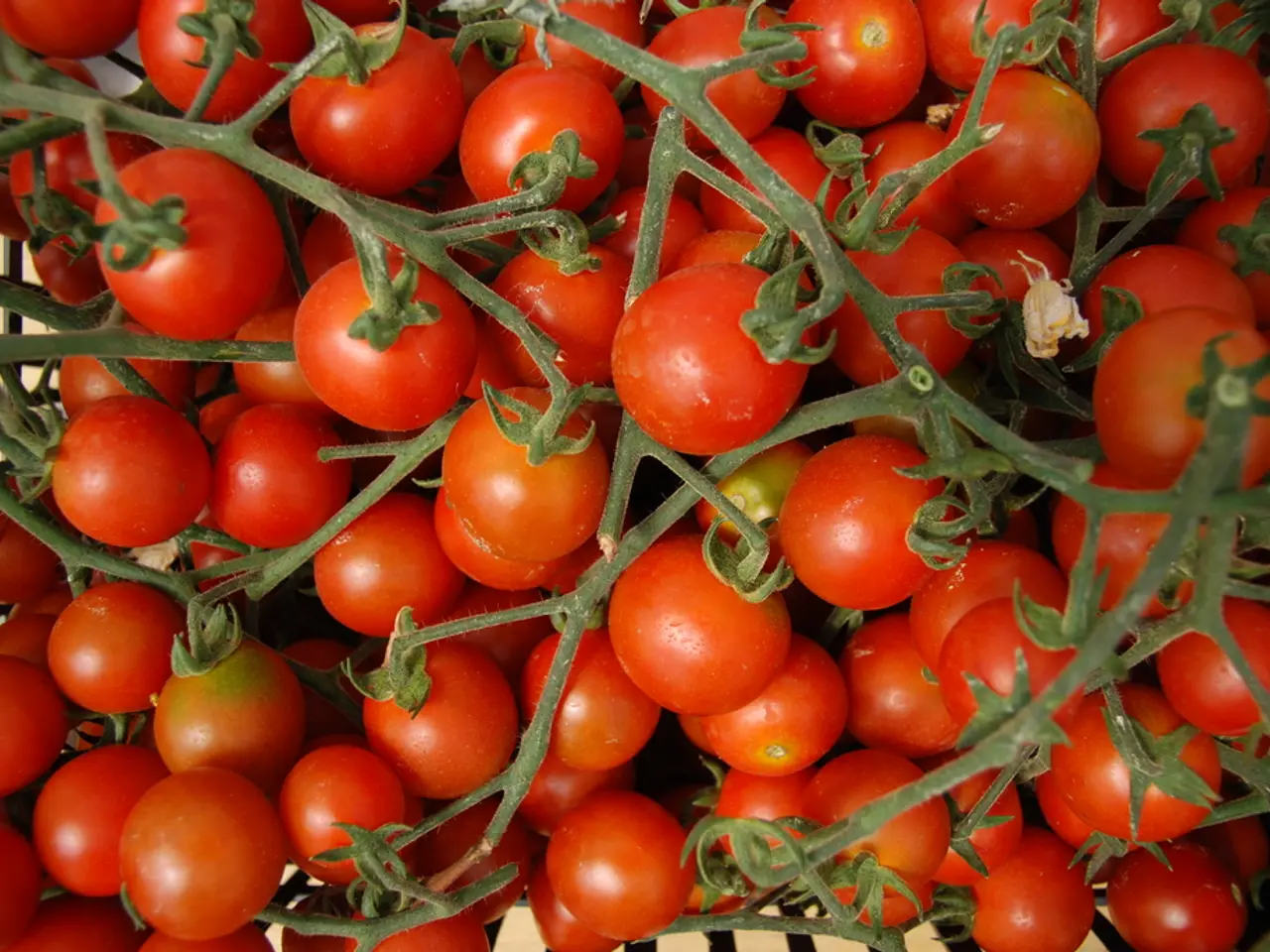Strategies for Optimizing Tomato Plant Harvest: Insider Guidance for Green Thumbs
In the world of gardening, maintaining a healthy tomato plant can be the difference between a bountiful harvest and a disappointing season. Proper pruning is an essential technique for focusing the plant's energy on fruit production, improving air circulation, and minimizing disease risk. Here's a comprehensive guide on how to prune tomato plants for optimal results.
### Techniques for Pruning Tomato Plants
The first step in pruning tomato plants is to **remove suckers**. These small shoots growing in the V-shaped area between the main stem and branches can be pinched off by hand or removed using clean pruning shears. Removing suckers redirects energy from excessive foliage growth to fruit production.
Thinning out the foliage is another crucial step. This helps sunlight reach all parts of the plant and improves air circulation, reducing fungal disease risk. Remove lower leaves touching the ground and any that appear diseased.
About 4 weeks before the first expected frost, remove the growing tips to encourage the plant to ripen existing fruit rather than develop new growth. However, avoid removing more than one-third of the foliage in a single session, as this can reduce photosynthesis and expose fruit to sunscald.
### Tools for Pruning
Use clean, sharp pruning shears or garden clippers to make neat cuts that heal quickly and minimize disease risk. Sanitize tools between plants to avoid spreading bacterial or fungal pathogens.
### Timing for Pruning
Start pruning when plants are 1 to 2 feet tall and show their first flower buds, typically late June or early July depending on climate. For indeterminate varieties, continue pruning every 10 to 14 days throughout the growing season. Always prune in the early morning when plants are dry to reduce disease risks. Avoid pruning during hot, midday sun or wet conditions to prevent stress and infection.
### Important Considerations
Pruning does not increase the number of flowers or fruits but helps manage plant size and vigor, potentially leading to larger, better-quality tomatoes. Indeterminate tomatoes benefit most from pruning, while determinate types generally require less or no pruning once fruiting starts. Aggressive pruning is often required for giant tomato varieties to channel energy into fruit development effectively.
By following these practices—regular sucker removal, timely thinning, proper tool use, and respecting pruning intervals—you will maintain healthy plants that produce abundant, high-quality tomatoes throughout the season. Remember to check tomato plants weekly to catch any issues early.
Larry Meyers, an experienced lawn and landscaping professional, shares his knowledge in the field of gardening. He has written articles on when to plant tulips in Missouri, snail bait safety for dogs, and when to plant pumpkins in Michigan for Halloween. His aim is to help gardeners like you thrive in their gardening endeavours.
To ensure a comfortable grip and reliable performance, consider using Fiskars pruners. For those with limited hand strength, ratchet pruners can be beneficial. Always sterilize pruning tools with alcohol or a bleach solution to prevent the spread of diseases.
Happy gardening!
In the gardening world, pruning tomato plants not only helps manage their size and vigor but also encourages the production of larger, better-quality tomatoes. Following techniques like removing suckers, thinning out the foliage, using clean, sharp pruning tools, and respecting pruning intervals can lead to a bountiful home-and-garden harvest. For gardeners who require assistance due to limited hand strength, ratchet pruners can be beneficial.



